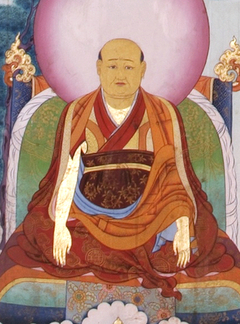Patrul Rinpoche Series
English (45) | Deutsch (10) | Español (12) | Français (21) | Português (10) | Italiano (2) | 中文 (2) | བོད་ཡིག (45)
Texts by and about the great Rimé master Dza Patrul Orgyen Jigme Chökyi Wangpo (rdza dpal sprul o rgyan 'jigs med chos kyi dbang po, 1808–1887):
Advice
Aspiration Prayers
Biography
Bodhicaryāvatāra
Buddhist Philosophy & Teachings
Dedication
Dharma Protectors
Dzogchen
Lineage Prayers
Ngöndro
Pedagogy
Practices
Praise
Prajñāpāramitā
Prayers
Sādhanas
Sojong
Special Teaching of the Wise and Glorious King
Topical Outlines
Transference (Phowa)
compiled by Patrul Rinpoche
Vows & Commitments
arranged by Chatral Rinpoche
